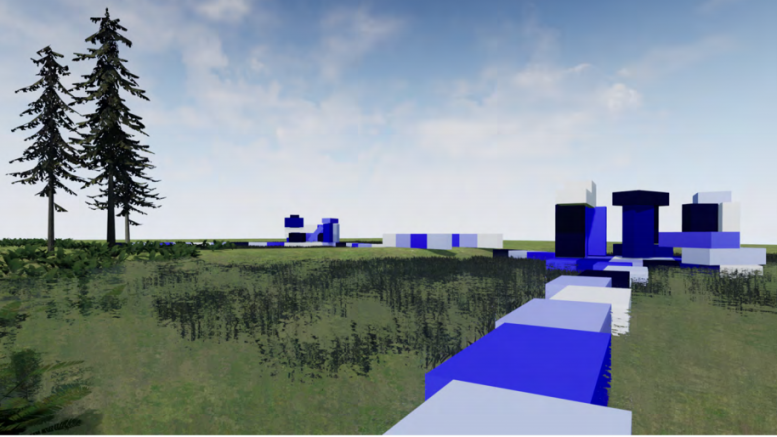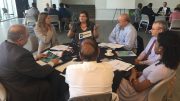Felipe Cisternas/Staff Writer
As climate change continues to change the face of our planet, South Florida faces the ongoing threat of sea level rise. Now with a new virtual reality software, students have the ability to experience what it’s like to live and build underwater.
FIU’s latest technology called COMMUNITY, is bringing together 3D printing technologies and augmented reality and virtual reality to teach incoming students 21st-century skills while benefiting teaching, learning and research.
“Every student is challenged to build structures and work with their teammates to escape a completely simulated 18 inch underwater environment using virtual reality headsets and backpacks,” said Jennifer Gebelein, director of academic initiatives and department of earth and environment research professor.
Gebelein who is in charge of overseeing the general aspects of the project, works to implement the software within the “First Year Experience” course, otherwise known as SLS 1501.
The software is an opportunity for students to learn the 4 C’s of the VR program: communication, collaboration, creativity and critical thinking.
“You are free to decide on how to work in this dynamic environment given limited resources and time. The main goal is to explore new opportunities using the 4 C’s, which is part of 21st century skills,” said Gebelein.
When a problem occurs, students should be ready to confront and resolve it quickly.
“When the water level rises, what are you going to do? How will you and your group manage that,” she said.
With minutes to decide what to do, students work together to use building blocks to create paths and build structures.
“The building blocks used are shelters to complete the simulation and are given certain attributes, such as different textures and sounds such as music notes are used to let students of their progress with every properly placed block,” said Gebelein.
So far, the software has given students new ways to engage remotely.
“We have progressed the software from proof of concept to alpha testing, it has allowed FIU to engage with students during difficult times,” she said.
Currently there are three students volunteering: Haczar Criollo, a computer science student, Edward Gonzales, also a computer science student, and Maria Camila Costantini, an architecture student.
“We currently have a handful but the more testers we get, the better we can make the software,” said Gebelein.
According to Gebelein, no computer science expertise but knowledge of VR technology is needed to volunteer.
“There is a learning curve on how to use COMMUNITY VR, but no computer science expertise is necessary,” she said. “Just learning how to use the input, in other words having knowledge to use VR technology.”
COMMUNITY was made possible thanks to the collaboration between FIU’s Miami Beach Urban Studios, HP and EDUCAUSE, as part of their “Campus of the Future” initiative. Other collaborators are the School of Computing and Information Sciences, College of Engineering + Computing, College of Communication, Architecture + the Arts, Academic and Career Success and Wetland Ecosystems Research Lab.
Currently, students can participate in alpha testing by signing up here.






Be the first to comment on "Virtual Reality Program Submerges Students in Underwater Learning Environment"